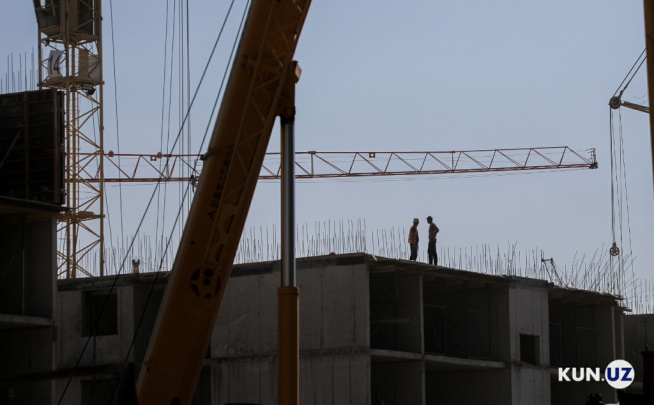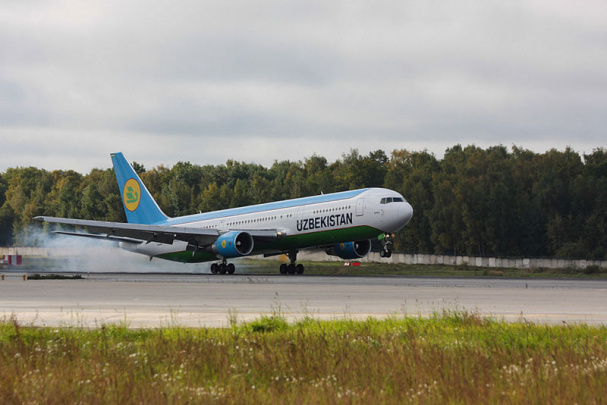Wages, job trends, and migration: Key findings on Uzbekistan’s labor market
In the fourth quarter of 2024, the retail, manufacturing, and food service industries had the highest number of job vacancies in Uzbekistan, according to the Central Bank's online labor market monitoring.
Between October and December 2024, nearly 41,000 job openings were announced across the country. In comparison, the previous quarter (July–September) had 54,000 vacancies, indicating a decrease of 14,000. The Central Bank attributed this decline primarily to seasonal factors.
According to the analysis, the majority of job openings were in retail (21% of total vacancies), manufacturing (16.1%), and food service (15.7%). Compared to the third quarter, the number of vacancies in the construction sector dropped by 45%, in the food service sector by 30%, and in education by 26%.
Aside from seasonal factors, the decline in vacancies may also be linked to faster job placement rates, as positions are being filled more quickly.
Meanwhile, the number of job applications (resumes) continued to rise in the final quarter. Most candidates applying for these positions had mid-level qualifications, particularly in trade, administration, and personal services.
At the end of the third quarter of 2024, Uzbekistan’s unemployment rate stood at 5.7%, compared to 6.8% in 2023. During the July–September period, the economically active population reached 15.1 million people.
Changes in employment trends
The decline in unemployment and the increase in employment rates are largely due to the emergence of new industries and services in the labor market. However, traditional sectors such as agriculture and manufacturing saw a reduction in the number of employed workers.
The number of self-employed individuals continued to grow in 2024, reaching 4.5 million by year-end—1.8 times higher than in 2023. Most self-employed workers operate in personal services, agriculture, and social services.
Additionally, the number of individual entrepreneurs increased by 18%, reaching 284,000 by the end of 2024. The majority of these entrepreneurs are engaged in retail and personal service industries.
Wage growth slows down
As of the end of 2024, the average nominal salary in Uzbekistan reached 5.4 million UZS, which is 17.4% higher than in 2023. However, in real terms, wage growth was only 7.1%.
During the final quarter of 2024, wage growth accelerated due to salary increases in the public sector, particularly in education and healthcare.
However, in other sectors, wage growth slowed compared to the high growth rates of 2022–2023. The pace of salary increases declined in transportation and storage, housing services, and food service industries. Additionally, in banking, finance (including insurance and leasing), and IT and communications, wage growth also decelerated.
Following the pandemic, rapid digitalization across industries led to a high demand for specialists in these fields, driving significant salary increases in the IT sector. However, by 2024, as the labor market stabilized, wage growth in these sectors slowed down.
Despite this, retail salaries continued to grow due to strong consumer demand. Looking ahead, the ongoing digitalization of trade and other industries is expected to support wage growth in the IT, retail, and service sectors.
Labor migration
In 2024, the number of labor migrants from Uzbekistan increased significantly.
- A total of 6.2 million Uzbek citizens traveled abroad for work — 29% more than in 2023.
- Remittances from labor migrants grew by 30%, reaching $14.9 billion in 2024.
Recent data from the Central Bank indicates that more Uzbek migrant workers are now heading to European Union (EU) countries than in previous years.
- Poland accounted for 21% of EU work visas issued to Uzbeks.
- Lithuania followed with 17%, while Germany and Latvia accounted for 16% and 7%, respectively.
Additionally, the United Kingdom’s seasonal work program continues to attract Uzbek workers. In 2023, Uzbek nationals received 4,094 UK seasonal visas, making up 13% of all seasonal work visas issued by the UK that year.
Migration to South Korea is also increasing, primarily for education and employment opportunities.
Meanwhile, labor migration to Turkey has risen, driven by macroeconomic stabilization and an increase in residence permits granted to Uzbek citizens.
Despite these trends, the main destinations for Uzbek labor migrants remain Kazakhstan and Russia. Remittance flows and other economic indicators (such as exchange rates and wages) suggest that migration to these two countries remains stable.
Related News

12:58 / 20.05.2025
Labor Inspectorate official: More than 1.1 million new jobs created in Uzbekistan in four months

17:27 / 19.05.2025
Minors could be permitted to work in service and manual jobs under new draft law

12:59 / 14.05.2025
SSS detains Samarkand resident who promised to illegally send a family of five to the U.S. for $150,000

15:18 / 13.05.2025



